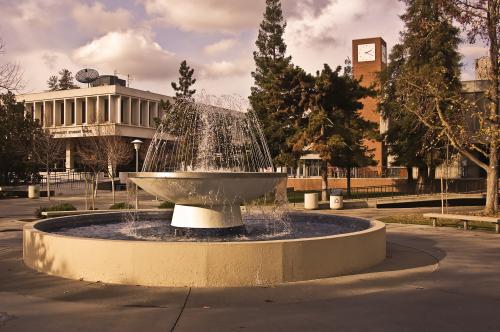Contents
- The nation’s innovation system isn’t just flagging—it’s dividing
- Proposals to close the innovation gap exist, but aren’t law yet
- Current congressional action on inclusive innovation isn’t enough
- There’s still a chance to deliver change
On his Inauguration Day, President Joe Biden signed a wide-ranging executive order proclaiming a “whole-of-government equity agenda.” Since then, “Bidenism” has centered equity for marginalized people and underrepresented communities as a core priority of economic renewal. Accordingly, the administration has, among other moves, ordered a major equity assessment of federal agencies’ operations and launched high-profile initiatives to address discrimination in the housing market and use the government’s purchasing power to boost disadvantaged small businesses.
Yet in one important area, the push for equity has been taking place under the radar. This area is the innovation budget, where both real progress and serious failure are possible. Therefore, the nation needs a big push to prioritize the inclusive innovation agenda in Congress’ critical spending bills; namely, the Democrats’ $3.5 trillion “reconciliation” package.
The nation’s innovation system isn’t just flagging—it’s dividing
It is well known that the nation’s innovation system has been flagging for some time. Federal R&D investment has been in decline for 60 years, sapping educational, health, and science institutions of the resources needed to introduce new products and services to the public. But that story leaves out an equally glaring problem: The innovation system is also deeply imbalanced, with nearly half of federal R&D spending flowing to just six states.

Likewise, countless articles report that the U.S. innovation system is lagging behind other nations. However, fewer accounts emphasize the extreme lack of diversity among those who receive funding. Most descriptions gloss over the fact that less than 1% of federal R&D expenditures went to historically Black colleges and universities (HBCUs) in 2019. And too few reports notice that only about 7.4% and 6.6% of National Science Foundation (NSF) and National Institutes of Health (NIH) grant awards, respectively, flow to Black and Latino or Hispanic innovators—far below those groups’ share of the population. The picture is just as bleak for Indigenous innovators, with only 0.5% of NSF awards flowing to Native Americans or Native Hawaiians and Pacific Islanders (NIH does not release data for those groups).

The result is that the nation’s unbalanced innovation investments have been reinforcing preexisting spatial and demographic disparities. This amounts to a structural distortion of the nation’s innovation ecosystem, with real costs to individual people and the economy.
In short, the innovation budget has systematically disenfranchised hundreds of communities and millions of potential innovators while weakening U.S. innovation outcomes, as Michigan State University economist Lisa D. Cook has documented.
Proposals to close the innovation gap exist, but aren’t law yet
Fortunately, Biden administration proposals and pending legislation in the Senate and House now spell out at least partial responses to inequality in the U.S. innovation system. These efforts go farther than ever before in seeking to reform the system’s imbalances in both their geographic and demographic forms.
The geographic response begins with President Biden’s call for the creation of at least 10 regional innovation hubs to reorient the nation’s innovation landscape by catalyzing innovative activity in regions “beyond the current handful of high-growth centers.”
Other proposals involve new investments that will channel flows of R&D and research infrastructure money into additional places, including rural areas, HBCUs, and minority-serving institutions (MSIs), which have their own underserved geographies. On this front, the administration’s American Jobs Plan (AJP) reserves half of the $40 billion it proposes for upgrades of “research infrastructure” for HBCUs and other MSIs. Underscoring the novelty and explicitness of that surge is the pledged affiliation of a new national lab focused on climate issues with an HBCU.
Beyond that, the AJP proposes the creation of a national network of small business incubators and innovation hubs to support the growth of entrepreneurship in communities of color and underserved communities. Such explicit and sizable federal investments in “left-behind” places and communities of color would represent a major advancement of the nation’s efforts to foster a more prosperous and just economy.
Turning to broader demographic disparities, the AJP also goes directly at the stark imbalances of who enjoys federal innovation support. On this front, the plan advances an overdue universal charge that the nation “eliminate racial and gender inequities in research and development and science, technology, engineering, and math.” Here, the AJP reiterates that persistent inequities in access to R&D dollars are preventing the U.S. economy from reaching its full potential, a note Cook and others have made.
Accordingly, the AJP calls on Congress to make a $10 billion R&D investment in HBCUs and MSIs. Even if spread over five years, that investment would be a major spur to Black and brown innovators and innovation, as HBCUs and institutions with high Latino or Hispanic enrollment obtained just $3.1 billion in 2019. Equally historic, the plan calls on Congress to invest $15 billion in creating up to 200 “centers of excellence” to serve as “research incubators” at HBCUs and MSIs, providing graduate fellowships and other opportunities for underserved populations.
Current congressional action on inclusive innovation isn’t enough
The problem now is that uncertainty surrounds these urgent proposals, as the Senate moves—with a critical initial vote this morning—to pass a $3.5 trillion budget blueprint that marks the Democrats’ push to employ the reconciliation process to pass their priorities by party line vote.
The good news is that bipartisan legislation currently working through Congress incorporates several elements of the needed innovation inclusion agenda. Most notable is the Senate’s U.S. Innovation and Competition Act (USICA), which passed with a 68-32 vote in June and includes valuable provisions to counter both geographical and demographic imbalances. On the former front, the bill provides $10 billion for “regional technology hubs” to build innovation capacity in new regions and would set aside 20% of new funds allocated to the NSF and the Department of Energy to support the EPSCoR program, which builds research capacity in states that historically receive low R&D funding.
On the broader demographic front, the USICA creates a chief diversity officer at the NSF; establishes an $150 million per year capacity-building program for MSIs and other institutions promoting STEM education for underrepresented populations; and would reserve $5.2 billion for STEM scholarships, fellowships, and other awards, with a focus on underrepresented populations. Mirror provisions of some of these elements have also emerged from House committees—all of which is welcome.
With that said, the inclusive innovation measures visible in current legislation are not enough, while uncertainty surrounds the addition of further measures to the reconciliation bill.
To begin with, the House Committee on Science, Space, and Technology’s proposed funding level for the regional innovation hubs came out too low, at just $7 billion compared to the Senate’s $10 billion. That points to an underpowered initiative to combat interregional inequality.
There are other, equally serious gaps. Neither the USICA nor the Senate’s bipartisan infrastructure package contain the $10 billion for R&D at HBCUs, MSIs, and Tribal Colleges and Universities (TCUs) that the American Jobs Plan called for—and neither is there clarity about those investments in this week’s reconciliation document.
Likewise, those two bills and the reconciliation package don’t include specifics on the $15 billion the AJP proposed for the formation of 200 research incubators at HBCUs and MSIs. And neither is there much detail on the AJP’s $20 billion for laboratory upgrades and “research infrastructure” at HBCUs, MSIs, and TCUs, although the topic is mentioned in the budget measure.
In short, there’s too little clarity about whether any of these items are slated to be added to the catch-all reconciliation bill that Democrats are preparing to fill out work on President Biden’s priorities. So, despite unprecedented foregrounding by the Biden administration, the inclusive innovation agenda stands in danger of coming up short in the 117th Congress.
There’s still a chance to deliver change
The uncertain fate of the inclusive innovation agenda suggests that forceful advocacy is needed to secure such measures through both a House-Senate innovation package and the planned reconciliation bill.
Regarding the innovation package, economic and community leaders across the country need to underscore the importance of regional tech hubs for geographical fairness, and demand higher funding levels.
Likewise, all of those who recognize the harm being done to people and the economy by the disenfranchisement of Black and brown people in the U.S. innovation system need to insist that significant investments to counter that disenfranchisement find a place in the reconciliation bill. Significant funding for R&D, laboratory infrastructure, new centers of excellence, and STEM education for underrepresented students, HBCUs, and MSIs are the necessary starting point. The time has come, therefore, to make inclusion part of the nation’s innovation mandate, knowing that investing in underappreciated people, places, and institutions is one of the best ways to spur economic growth and expand the economy.
In sum, the costs and injustices of the nation’s uneven and exclusive innovation system can no longer be ignored. Whether geographic or demographic, the gaps are constraining growth, depressing opportunity, and entrenching unfairness. Congress and the Biden administration need to act now—starting with the reconciliation bill—to take the steps required to begin to fully enlist missing people and places in the U.S. innovation ecosystem. Through those steps, America can finally tap its potential to raise the standard of living and well-being for everyone, everywhere.











Commentary
Congress needs to prioritize inclusion in our slumping innovation system
August 11, 2021